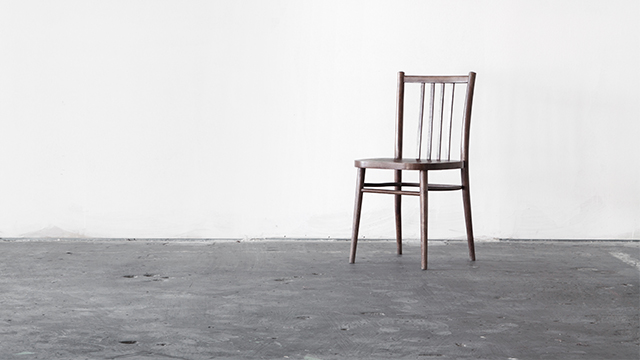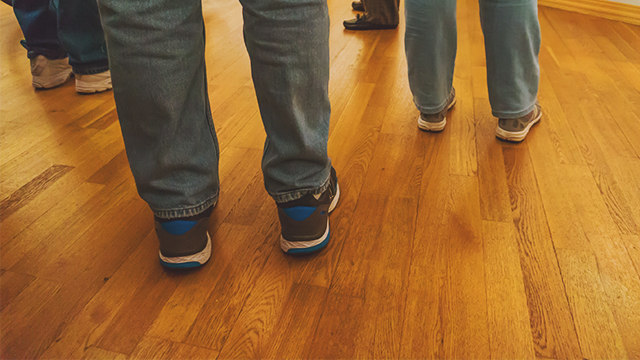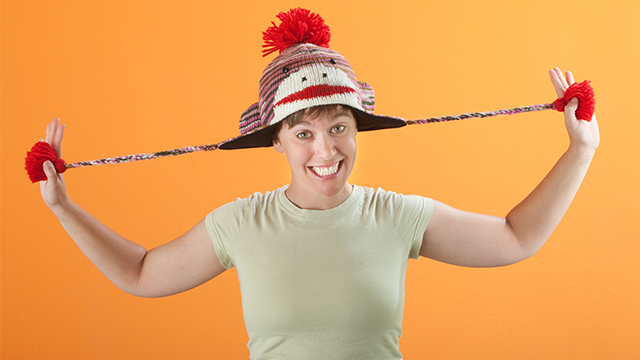3 Clowning Exercises for New Directors
Written by Ashleigh Gardner
March 21, 2018
If you’re a new director working on a comedy, you’ll probably be searching for the perfect exercise to get your cast up and moving — but most importantly playing. Modern clowning, a direct descendant of commedia dell’arte, is one of the most valuable and fun tools in performing comedy. Check out this intro and three easy exercises to get you started with clowning.
The Basics

You may think of clowns as red-nosed circus performers, and while this is true to an extent, there are also theatre clowns — characters that wear no makeup but are mischievous and fun-loving and sometimes sad. Clowns always have a secret behind their eyes, and they’re always trying their best to complete a task, whether it’s very difficult for them or very easy. When a clown fails, they must try again…and again…and again until they get it right. Some clowns like to break the rules, and that’s okay, too. The only solid rule to clowning is play. (Some directors ask that clowns do not speak during an exercise; this is to place the emphasis on the action instead of the voice.) The clown is the most authentic acting style since the clown is a character based on the actor, taken from the actor’s inner self.
Finding the Clown

To find an actor’s clown, directors may often use an exercise that starts with the actor closing their eyes and imagining that they have a secret. An innocent secret. Maybe the actor took a marble from the jar or a cookie from the sleeve. Maybe they pick their nose when no one is looking. Then, the director asks the actor to examine how they feel about their secret, asking questions of the actor like, “Does your secret make you shy, excited, vulnerable, scared, etc?” The actor opens their eyes, and, as their clown, they begin to interact with other clowns in the room who have gone through the same exercise. The director will ask the clowns to interact without touching: winking, waving, scowling, raising eyebrows, etc. The questions (during eyes closed and open) are designed to allow the actor to experiment with reactions and actions and decide of what is most appropriate for their own clown. Once the actor commits to their clown and has a solid foundation (about 10 minutes of play), the director can move on to other exercises.
Exercise #1: The Chair

Directors place a chair in the center of the room. The clown must interact with the chair but they are not allowed to touch it. (And just because they’re not allowed to touch it, doesn’t mean they can’t. Clowns can break the rules, too.) At some point in the exercise, the clown may touch the chair, but they are not allowed to sit in it. (Again, break the rules…or not.) Further in the exercise, the clown is finally allowed to sit in the chair. How does this make them feel? What happens when the clown hears someone coming? Are they scared? Are they alarmed? Do they care? Toward the end of the exercise, the clown must get up from the chair and leave it. The question that lingers is how do they leave the chair? When they have exited the “room” where the chair is, the exercise is over.
Exercise #2: Imitation Exaggeration

Directors have actors balance the room, and actors walk around as their clowns. As clowns walk around the space, they pair up where one clown follows another. The clown following follows closely but does not touch the clown in front. The clown following must observe the clown in front of them and begin to imitate them. During the exercise, directors should ask the clowns following to increase their exaggeration level by 2, then 4, then 6, then 10. Then, clowns who are being followed should spin around and catch the other clown. How does this affect the clown who was following? How does either party respond?
Exercise #3: Hats and Bad Luck

Directors can bring in several hats to the rehearsal for this exercise. They allow each clown to choose the hat they like the best. (If there aren’t enough hats to go around, the other clowns without hats sit in the audience and obverse — in character — the clowns with hats.) Clowns should walk the space and get familiar with their hats. Then, the director should ask the clowns with hats to walk casually around the space and consider they they’re in a nice park on a beautiful day. Directors then tell the clowns that bad luck is coming their way — bird poop has fallen on their shoulder. What do the clowns do? How do they react? Then, more bad luck: the clowns trip over a rock. How do they react? Then, more bad luck — they lost the $10 bill in their pocket. How do they react? When the clowns with hats have finished, they switch places with the clowns in the audience. The exercise continues until each clown has had a chance to play with a hat.
Need some advice? We’ve got you covered.
- The Surprising Truth About College Auditions
- 9 Useful Diction Exercises for Every Actor
- How to Bow (And What Your Bow Says About You)
- 10 Basic Rules of Stage Combat (That Keep Everyone Safe)
- 5 Advantages of Learning Stage Combat
- Don’t Be a Diva: Common Pitfalls and How to Avoid Them
- 9 Articles of Clothing Every Thespian Should Keep In Their Wardrobe
- What Makes an Actor Website WOW?
- “Is my attitude not getting me roles?” And Other Essential Questions for Actors
- 6 Steps to Memorizing Shakespeare
- 10 Tricks to Staying Healthy All Season Long
- What Does It Take to Break Into Voiceovers?
- 5 Tips for Nailing Your College Music Theatre Audition
- 10 Tips on Owning the Room at Competition
- How to Balance Theatre and Coursework
- The 10 Secrets of Great Understudying
- 10 Items Every Actor Should Carry in Their Rehearsal Bag
- 10 Items Every Dancer Should Keep in Their Rehearsal Bag
